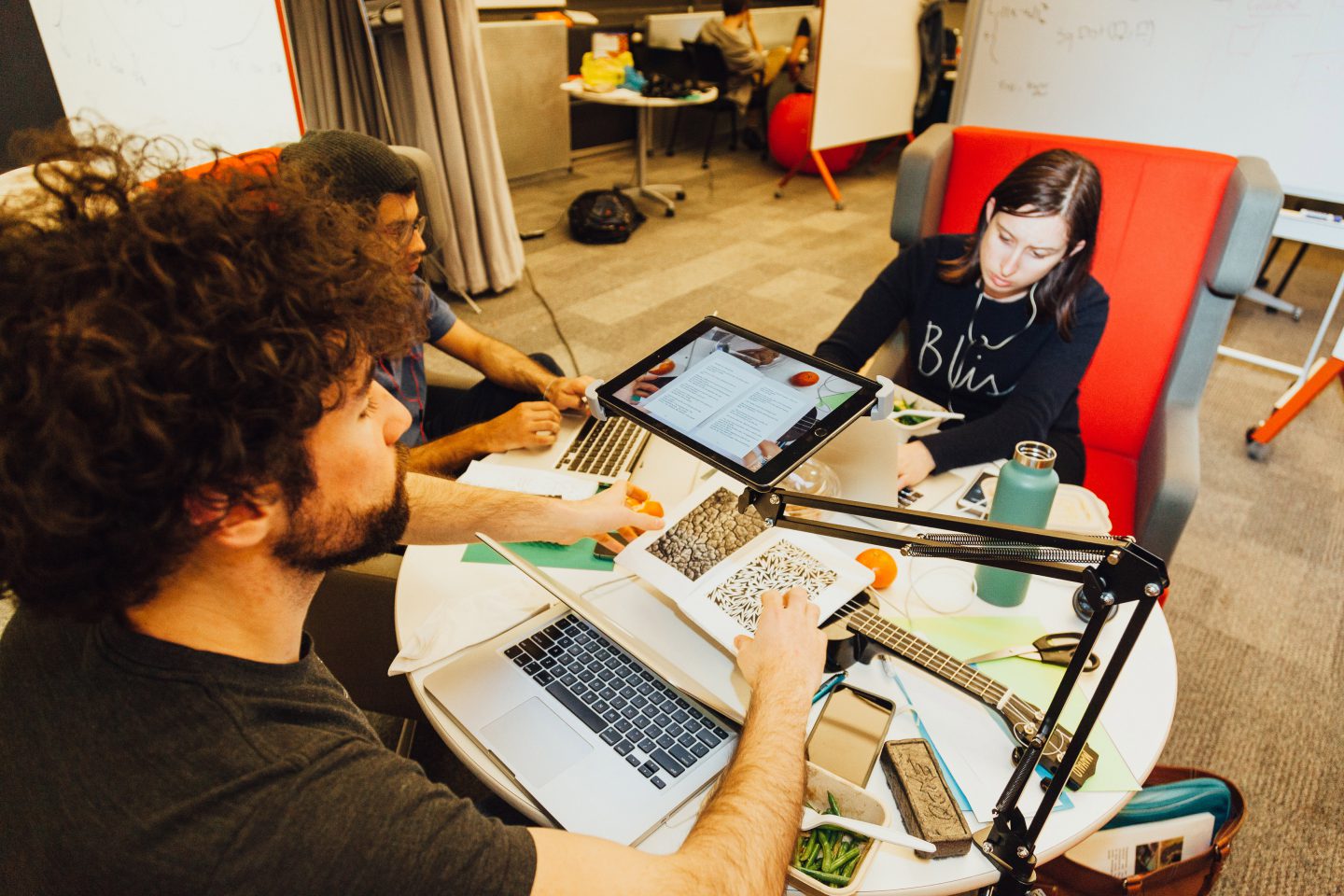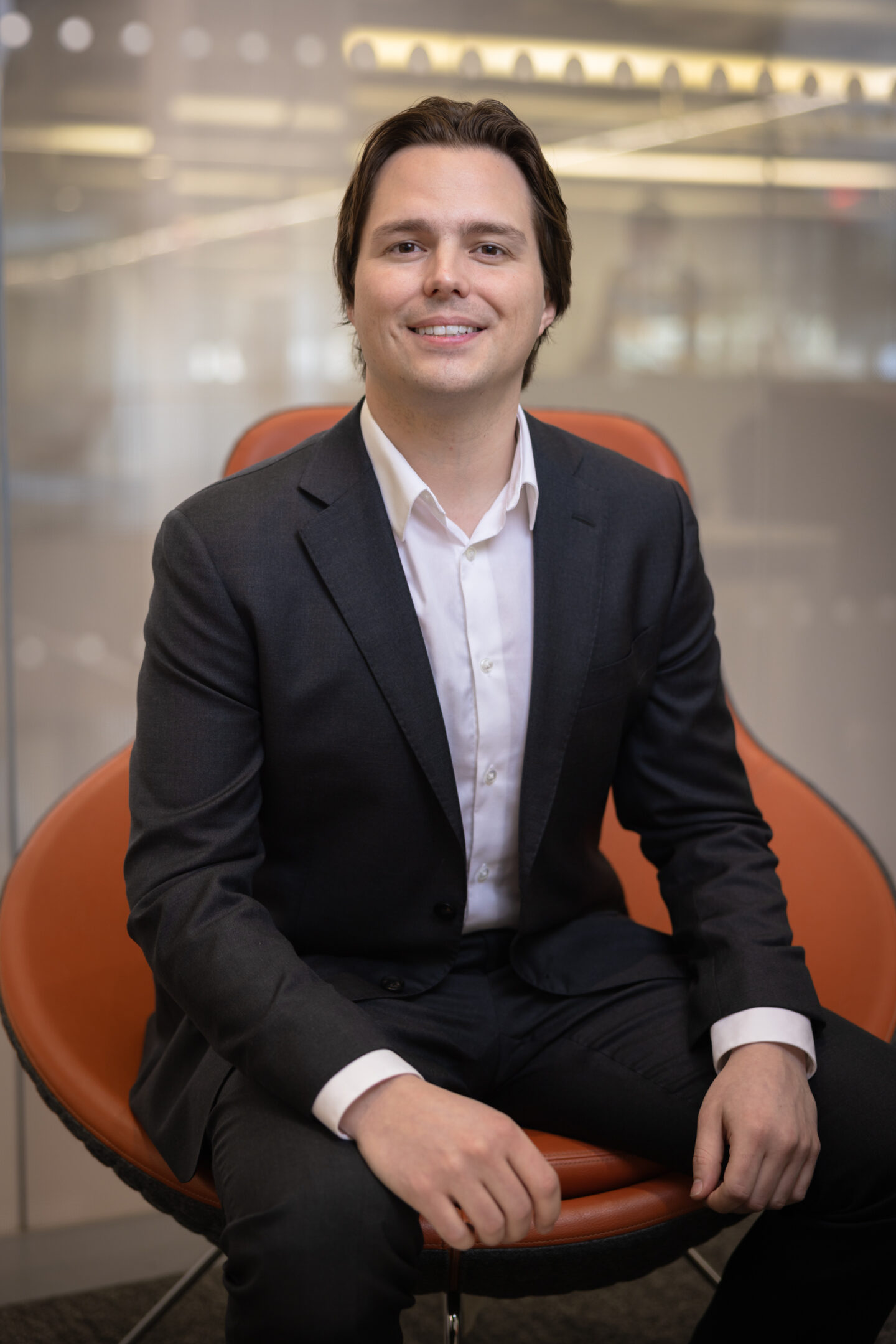OneBook to Rule Them All: A Cornell Tech Startup Brings Mixed Reality to Reading
Categories
Connective Media, Innovation, Jacobs Institute, MBA, Startups, Students, Technology

Imagine your favorite children’s book: its colorful illustrations and lyrical sentences practically jump off the page. Now, imagine that same book had animations and interactive features which, when touched, made the words and characters literally jump off the page.
At least, that’s the idea behind OneBook, a startup that uses mixed reality to make digital content come alive on a real-world surface.
The company is the effort of two recent Cornell Tech graduates, Alap Parikh and Brandon Plaster, both of whom received Master of Science in Information Systems degrees, with a concentration in Connective Media at the Jacobs Technion-Cornell Institute.
“We built OneBook because we are passionate about the tangible experience of books, and thought there could be a device that bridged the physical and digital world when reading,” said Plaster.
OneBook started as an idea at the Hearst Hackathon last fall where Parikh and Plaster spent 24 hours brainstorming and developing the initial concept. After getting the basic idea down, they took their experience back to Cornell Tech’s Startup Studio program and worked on it over the next four months.
“In that very short amount of time, the program helped us cover a lot,” said Parikh. “We learned what to look for and think about when developing a product, and how to organize and present our vision.”
Plaster agreed that the program’s iterative presentation process, which encouraged engagement and communication with people from different fields, was key to success. “I’m so glad we were not doing this in a vacuum,” he said. “For this project, we had to paint our own vision of what we wanted the future to be. It’s right on the cutting edge of mixed reality.”
Also helpful, Parikh noted, was that the head of the Startup Studio, David Tisch, met with them regularly during the critical development phase.
“Cornell Tech was willing to purchase of a Microsoft HoloLens for the school’s device library,” said Plaster. “We were able to work together to bring that in as a tool for everyone to use.”
Of course, building the prototype is only the beginning of a viable startup. Next for Parikh and Plaster was understanding the current market for mixed reality applications, and where OneBook can fit in it.
“One of the biggest challenges we had was explaining how this would work to people who aren’t in the tech world,” Plaster recalled. “Since virtual and mixed reality are relatively new terms, not everyone understands the difference between them, or what they do.”
Also, most people don’t have a headset to experience virtual or mixed reality — at least, not right now. But Parikh and Plaster are confident about the future of the technology.
“By the end of the year, we think there will be enough people to get their hands on a Microsoft HoloLens or a Meta 2,” says Plaster. “In the next four years, mixed reality will be widespread in schools, offices, and homes, and OneBook will be a practical solution in those spaces.”





